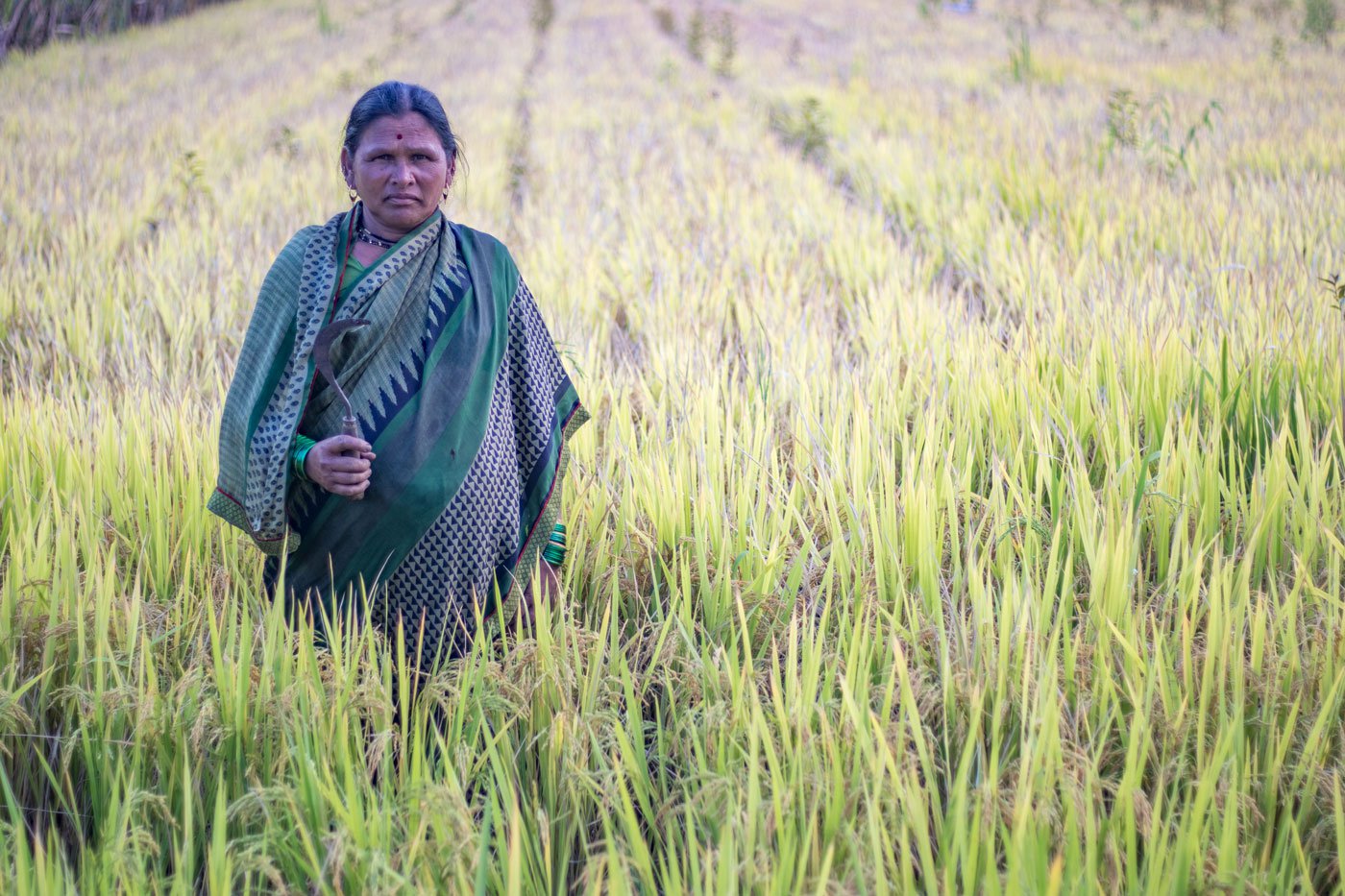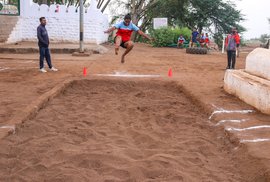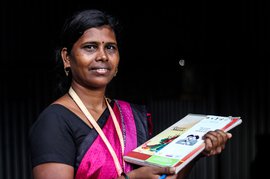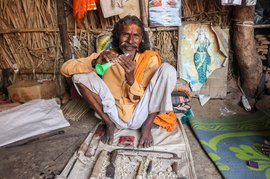Not long ago, farmers in Khochi, a village in the Hatkanangle taluka of Maharashtra’s Kolhapur district, competed with each other over who would produce the maximum sugarcane on an acre of farmland. Villagers say the ritual was almost six decades old. It was the kind of healthy competition that reaped handsome rewards for everyone involved: some farmers would grow as much as 80,000-100,000 kilos per acre, almost 1.5 times the normal harvest.
That ritual came to an abrupt end in August 2019 following a flood that left several parts of the village submerged for almost 10 days, damaging much of its sugarcane crop. Two years later, in July 2021, heavy rains and floods once again caused massive destruction to Khochi’s sugarcane and soyabean crops.
“Now, farmers don’t compete; rather, they pray that at least half of their sugarcane survives,” says Geeta Patil, 42, a tenant farmer and resident of Khochi. Geeta, who once believed she had learnt all the techniques to increase sugarcane production, lost more than 8 lakh kilos of sugarcane in the two floods. “Something has gone wrong,” she says. She hadn’t accounted for climate change.
“The rainfall pattern has changed completely [since the 2019 floods],” she says. Until 2019 she had a set routine. After every sugarcane harvest, typically around October-November, she would cultivate a different crop – soyabean,
bhuimug
(groundnut), different varieties of rice, s
halu
(hybrid sorghum) or
bajra
(pearl millet) – to ensure that the soil retained its nutrients. There was a fixed, and familiar, rhythm to her life and work. Not anymore.
“This year [2022], the monsoon was late by a month. But when it started raining, the fields were almost flooded within a month.” Large tracts of fields remained submerged for almost two weeks as it rained heavily in August; farmers who had just cultivated sugarcane reported extensive losses as excess water caused stunting and damage to the crops. The
panchayat
even issued warnings asking people to vacate their homes in case the water level rose further.
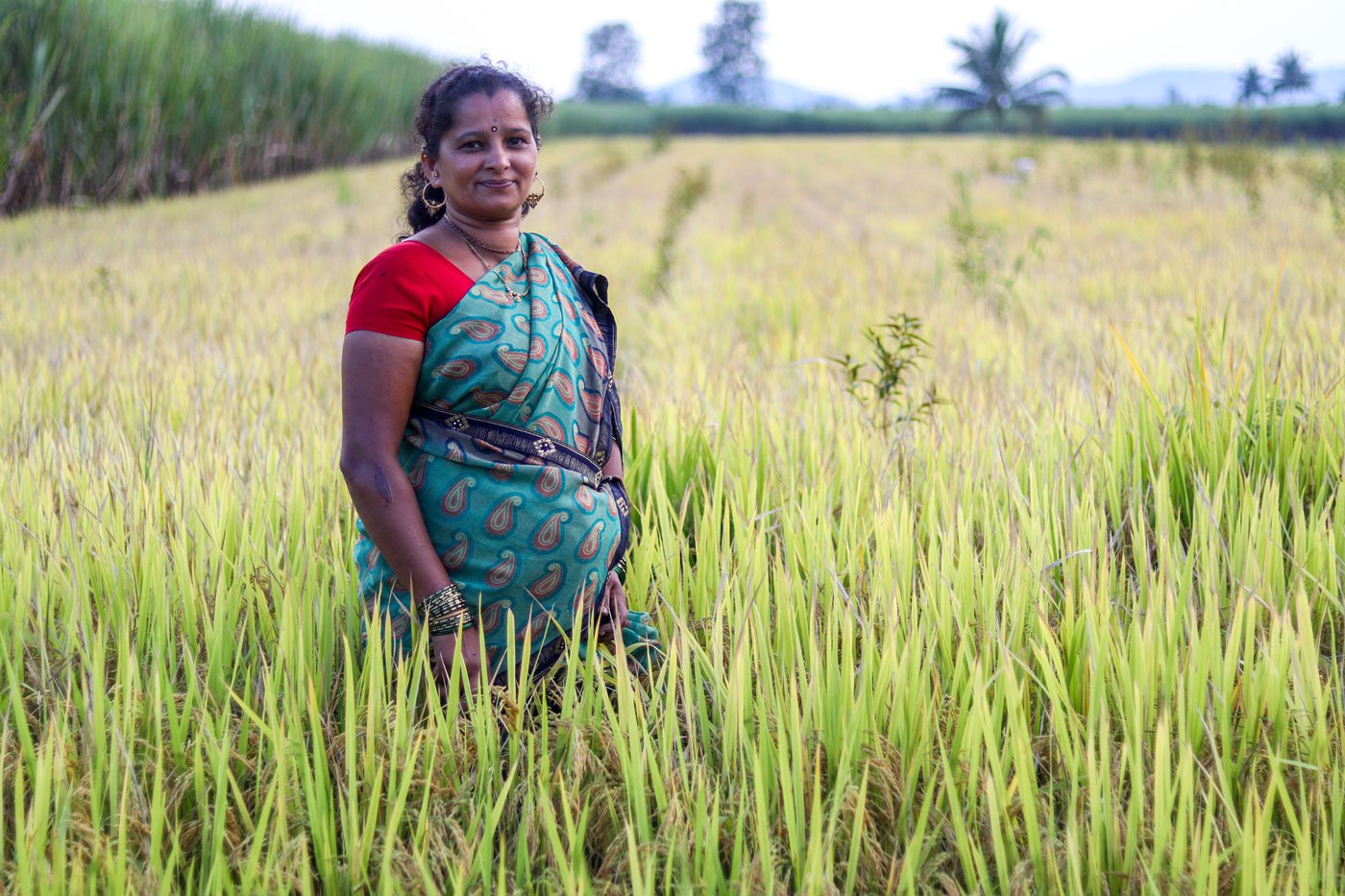
Geeta Patil was diagnosed with hyperthyroidism after the 2021 floods. 'I was never this weak. I don’t know what is happening to my health now,' says the says tenant farmer and agricultural labourer
Thankfully, the rice that Geeta had cultivated on an acre survived the deluge and she hoped for a decent harvest and some income in October. But, October brought unprecedented rains (people in the region describe it as 'dhagfuti' or cloudburst) – which, according to a report in the Times of India , destroyed close to a thousand hectares of farmland in 78 villages of Kolhapur district alone.
“We lost almost half the rice,” says Geeta, adding, even the sugarcane that withstood the heavy rain will see less yield. Her woes don’t end there. “As tenant farmers, we have to give 80 per cent of the produce to the landowner,” she points out.
Geeta and her family cultivate sugarcane on four acres of land. During normal times, the output would be at least 320 tonnes. Of this, they could keep only 64 tonnes while the rest went to the land owner; 64 tonnes roughly translate to Rs. 179,200 for 15 months of hard work by at least four members of the family. The landowner, who bears only the cost of production, rakes in a whopping Rs. 716,800.
In 2019 and 2021, when they lost all the sugarcane in the floods, Geeta’s family did not get a single rupee. They were not even paid labour charges despite cultivating the sugarcane.
In addition to the losses incurred on the sugarcane, they also suffered a huge blow when their house collapsed partially in the August 2019 floods. “It cost us almost 25,000 rupees to repair it,” says Geeta’s husband, Tanaji, adding, the government “merely gave 6,000 rupees as compensation.” Tanaji was diagnosed with hypertension after the floods.
The floods damaged their house again in 2021, forcing them to move to another village for eight days. This time, the family could not afford to get their house repaired. “Even today, if you touch the walls, they are damp,” says Geeta.
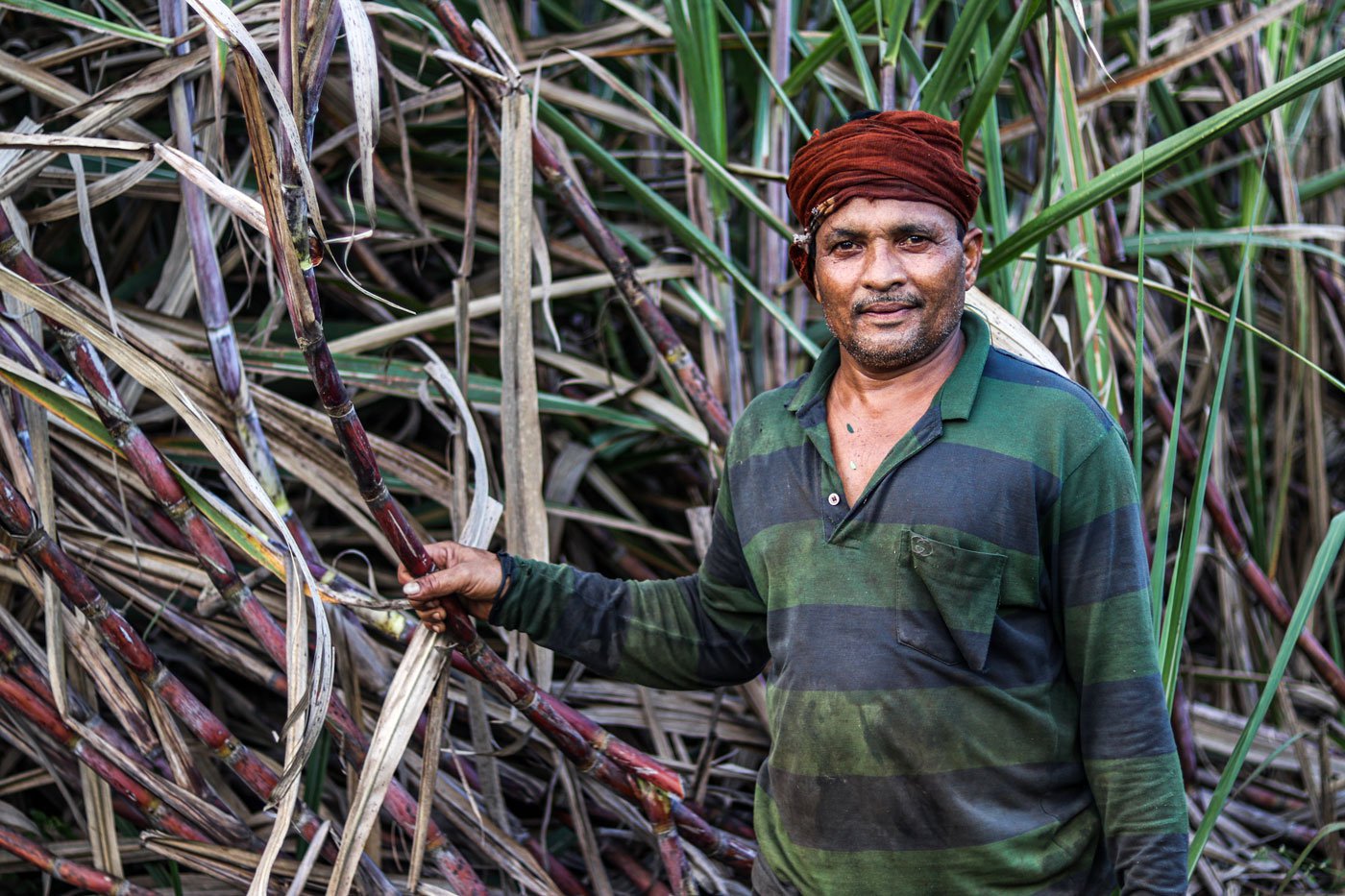
After the 2019 floods, Tanaji Patil, Geeta’s husband, was diagnosed with hypertension; the last three years have seen a spike in the number of people suffering from non-communicable diseases in Arjunwad
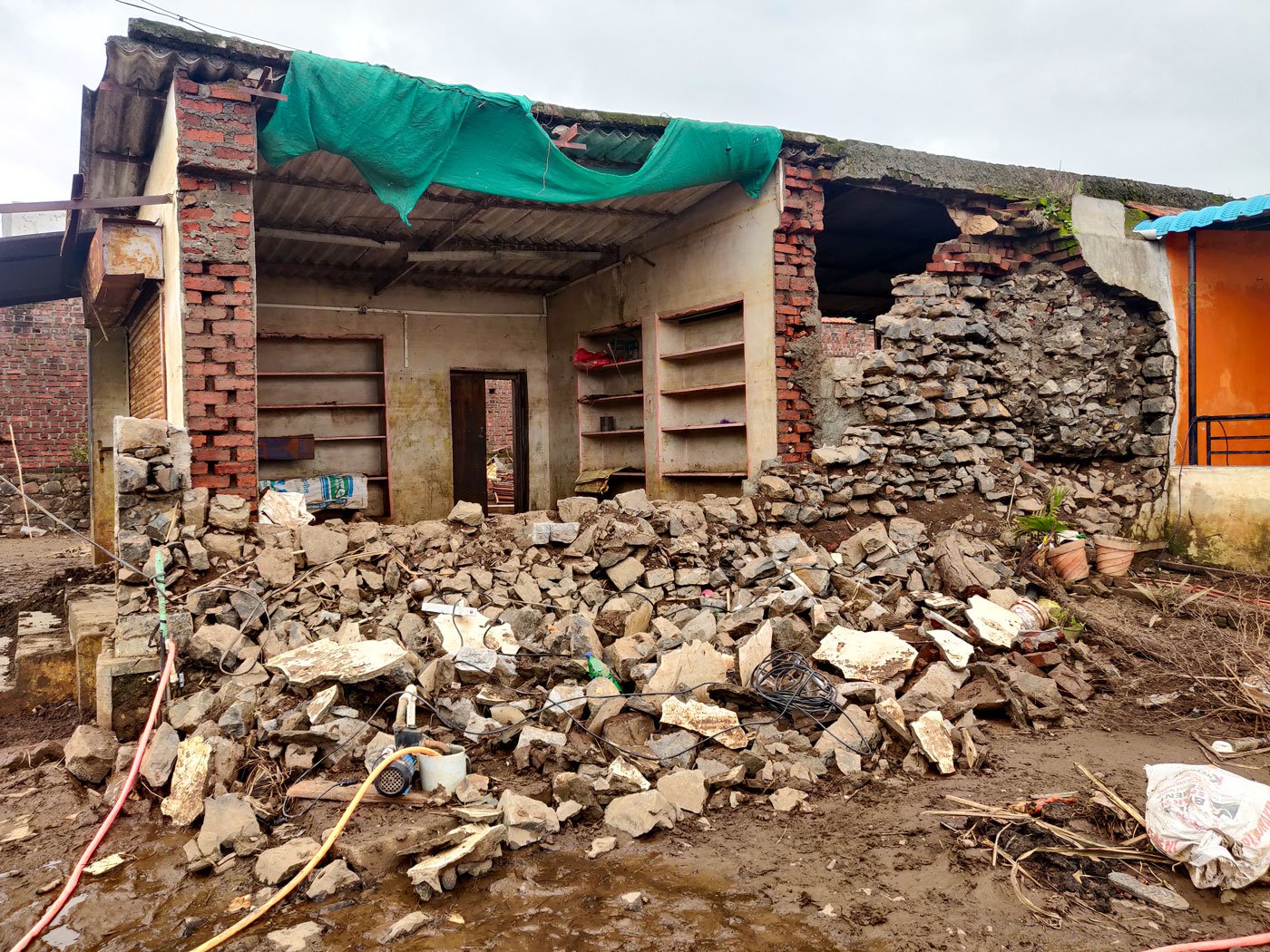
A house in Khochi village that was damaged in the 2019 and 2021 floods
The trauma is fresh, too. “Whenever it rains and the water seeps through the roof, every drop reminds me of the flood,” she says. “When it rained heavily in the second week of October [2022], I couldn’t sleep properly for a week.”
The family also lost their two Mehsana buffaloes, costing Rs. 1.6 lakhs, in the 2021 floods. “That took away our daily income from selling milk,” she says. A new buffalo set the family back by Rs. 80,000. “When you don’t get enough work in the fields [owing to flooding and inaccessible fields] cattle milk remains the only source of income,” she explains the reason for buying a buffalo they could ill afford. She also doubles up as an agricultural labourer to make ends meet, but there is not much work around.
Geeta and Tanaji have borrowed around Rs. 2 lakhs from different places, including self-help groups and private moneylenders. With their crops under constant threat of another flood, they now fear they won’t be able to repay the loans on time and it would further increase their interest burden.
The loss of certainty – in the rainfall pattern, the harvest, the income – is taking a toll on Geeta’s health.
“After the July 2021 floods, I started experiencing muscle weakness, stiffness in joints, and even breathlessness,” she says. She ignored the symptoms for four months, hoping they would ease over time.
“One day, it became so unbearable that I had to consult a doctor,” she says. Geeta was diagnosed with hyperthyroidism; the doctor told her that stress was rapidly worsening her condition. For a year now Geeta has been spending Rs. 1,500 a month on medicines. The treatment is expected to continue for another 15 months.
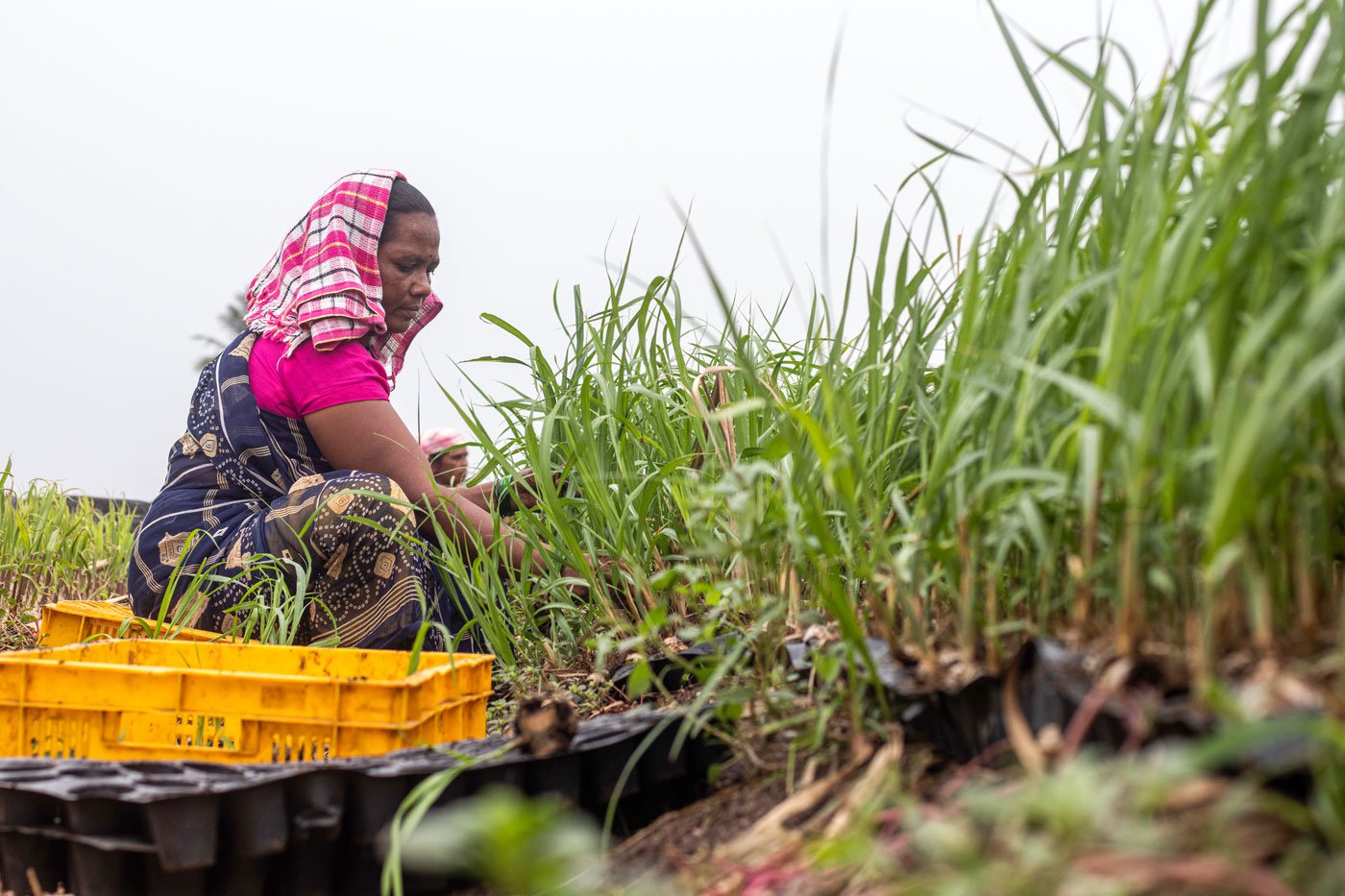
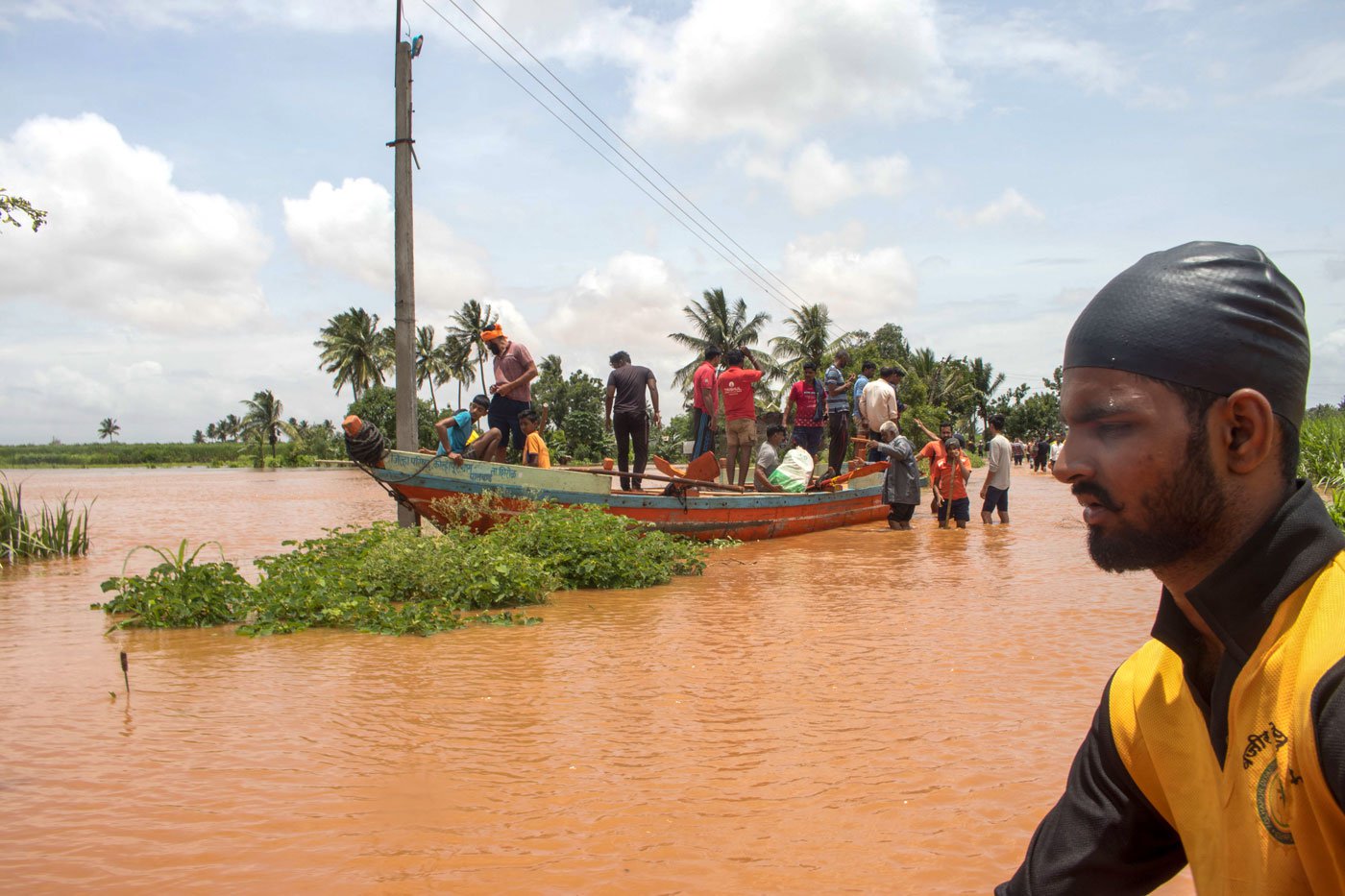
Left: Reshma Kamble, an agricultural labourer at work in flood-affected Khutwad village. Right: Flood rescue underway in Kolhapur’s Ghalwad village in July 2021
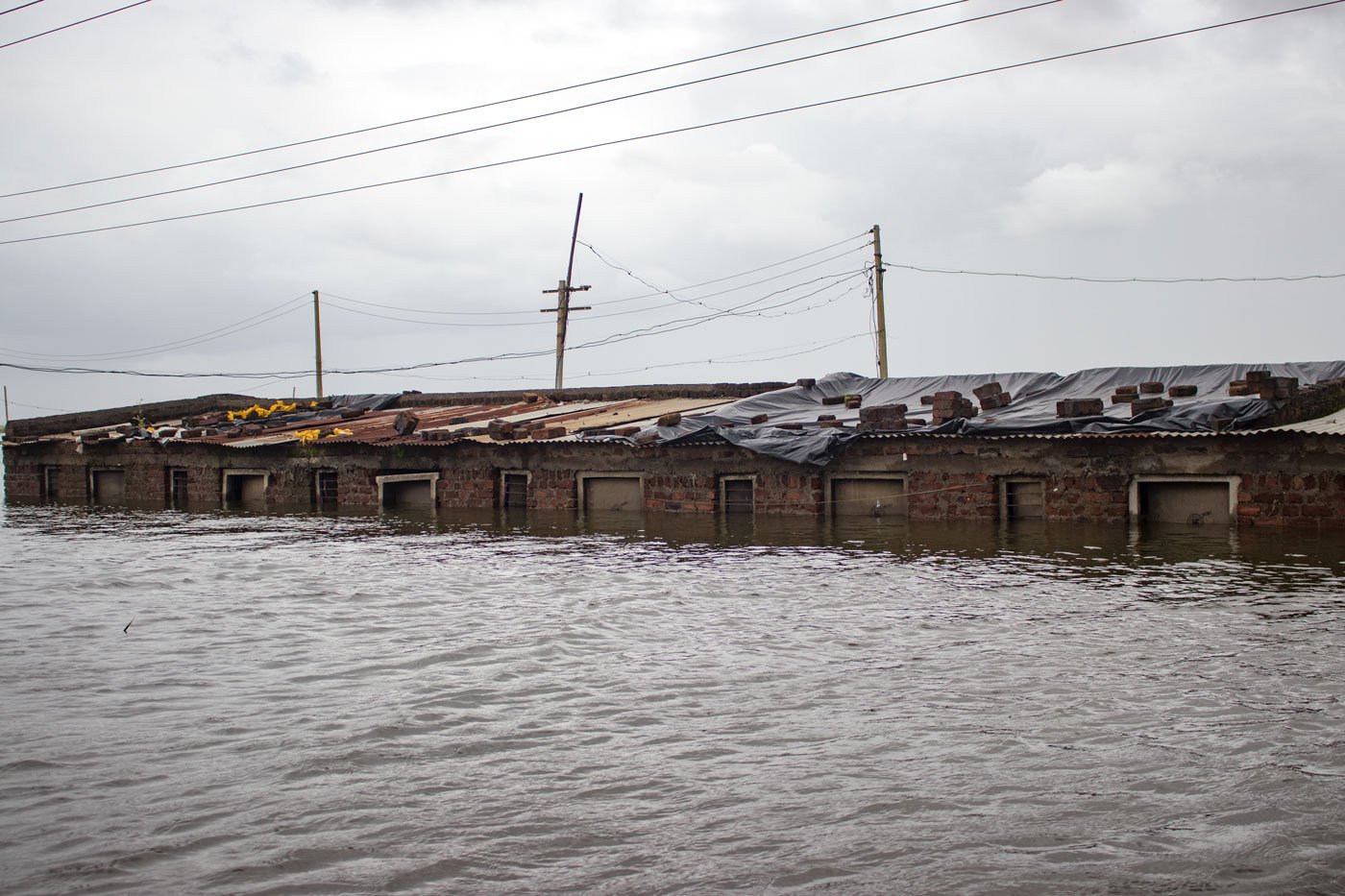
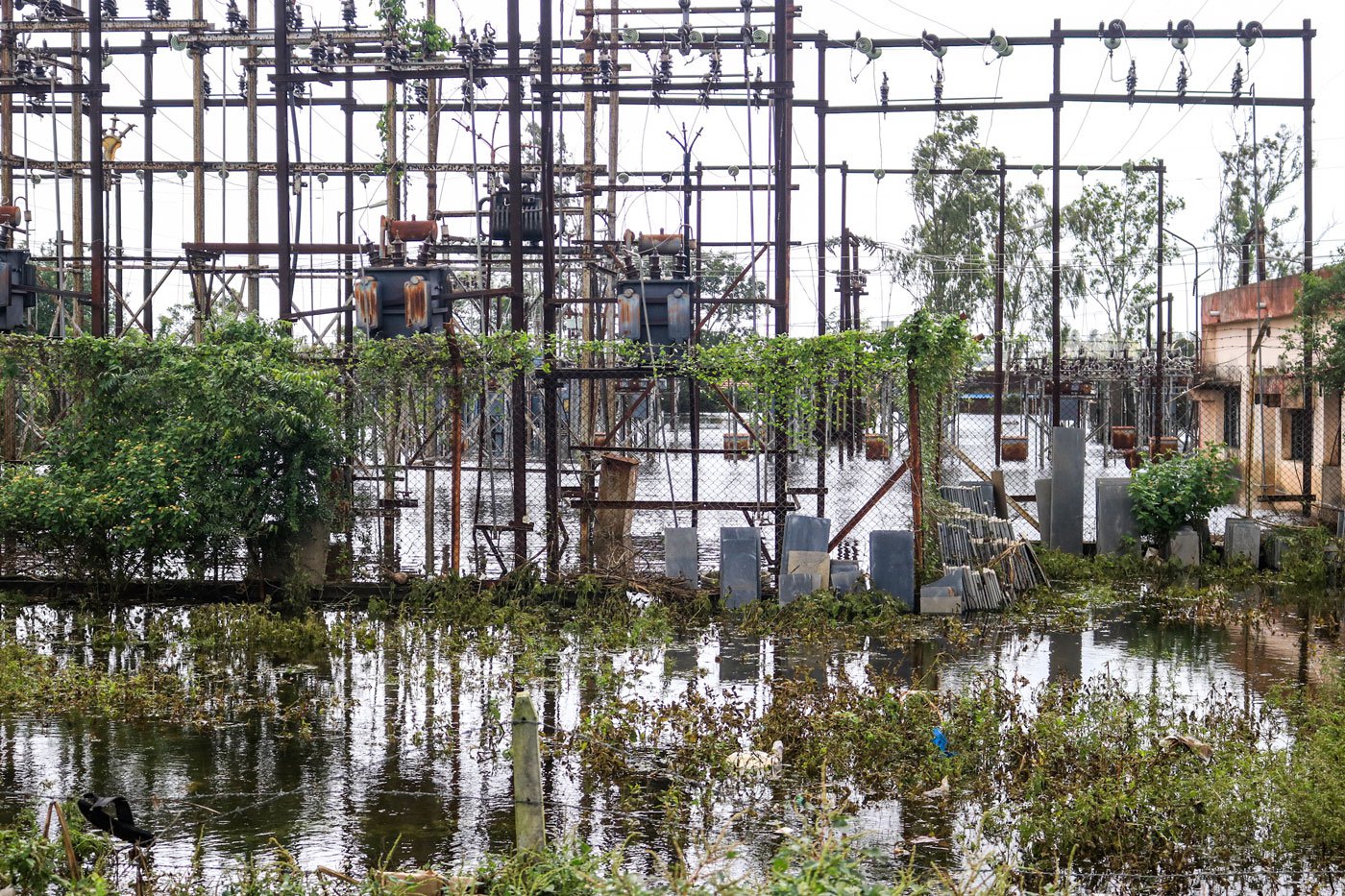
On the outskirts of Kolhapur’s Shirati village, houses (left) and an office of the state electricity board (right) were partially submerged by the flood waters in August 2019
Dr. Madhuri Panhalkar, community healthcare officer in Kolhapur’s flood-affected Chikhali village, says a growing number of people in the region are talking about the grief caused by the floods and their inability to cope with the mounting financial and emotional stress. The village, in Karvir taluka, is usually one of the first villages to drown when the water level rises.
Research conducted with 374 heads of families in five flood-affected districts of Kerala four months after the 2019 floods in the state found that those who had experienced two floods demonstrated higher learned helplessness (passive acceptance of a negative situation owing to previous exposure to a similar situation) than those who had experienced a single flood.
“Special attention must be given to the victims of frequent natural calamities to prevent negative psychological consequences,”
the paper
concluded.
In the villages of Kolhapur – and indeed for the 833 million people who live in rural India (Census 2011) – accessing mental health care is easier said than done. “We have to refer patients with mental health issues to the district hospital. However, not everyone can afford to travel that far,” says Dr. Panhalkar.
Rural India has a mere 764 district hospitals and 1,224 sub-district hospitals (Rural Health Statistics, 2020-21), where psychiatrists and clinical psychologists are appointed. “We need mental health care professionals at least at the primary health centres, if not the sub-centres,” the doctor adds. There is less than 1 (0.07) psychiatrist for every 1 lakh persons in India,
says a World Health Organisation
report
published in 2017.
*****
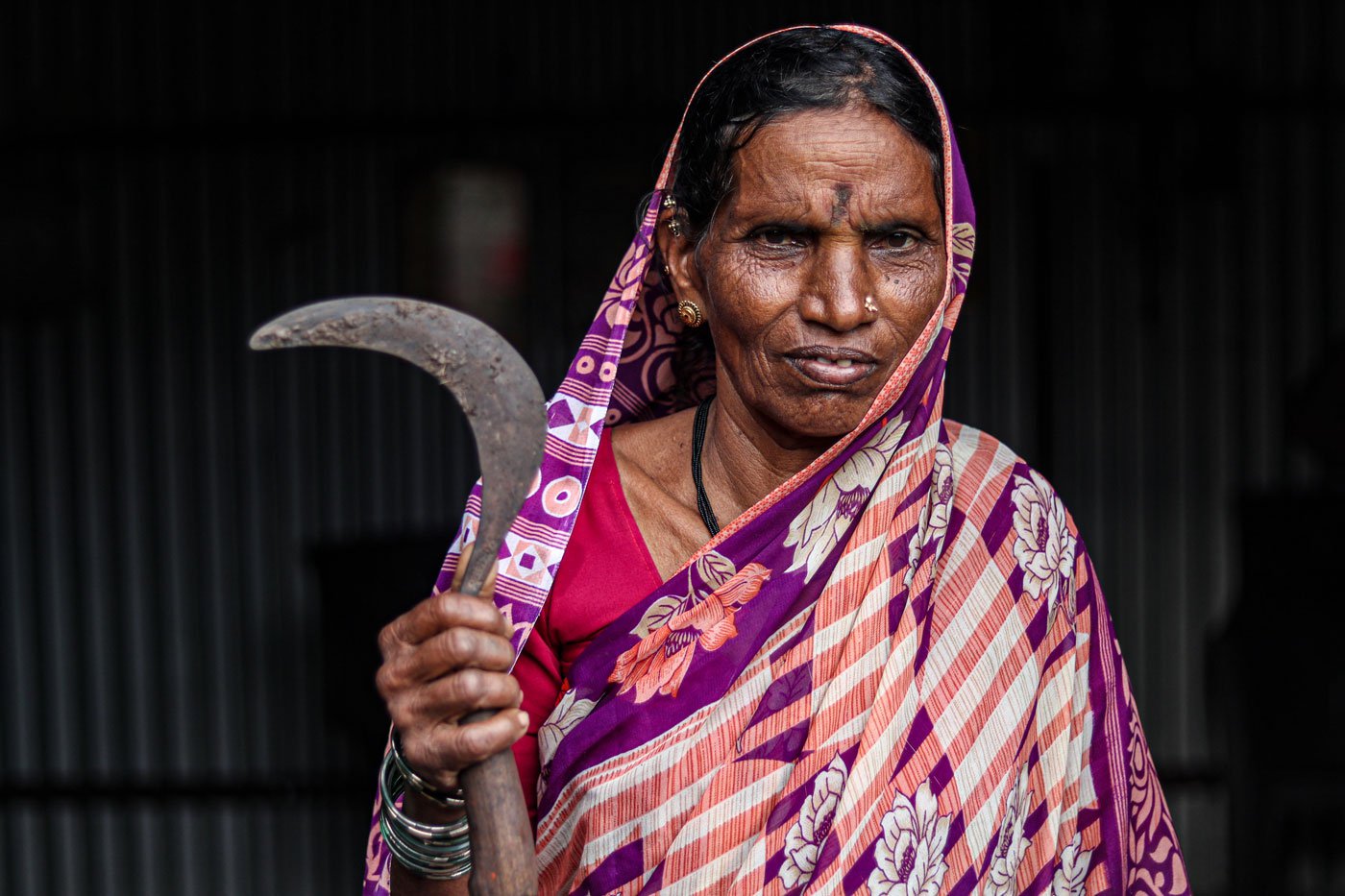
Shivbai Kamble was diagnosed with hypertension, brought on by the stress and fear of another flood
Shivbai Kamble, 62, is known in Arjunwad for her sense of humour. “She is the only agricultural labourer, ji hasat khelat kaam karte [works with a smile on her face],” says Shubhangi Kamble, an accredited social health activist (ASHA) in this village in Kolhapur.
Yet, within three months of the 2019 floods, Shivbai was diagnosed with hypertension. “Everyone in the village was surprised, especially because she is someone who is known to never be stressed,” says Shubhangi, who took it upon herself to find out what had led a happy-go-lucky woman to this. Thus began her extensive conversations with Shivbai, sometime in early 2020.
“At first, she wouldn’t share her problems; she would smile all the time,” remembers Shubhangi. However, Shivbai’s deteriorating health, including dizzy and feverish spells, indicated that all was not well. After months of conversations, the ASHA worker finally discovered that the recurring floods were to blame for Shivbai’s condition.
The floods of 2019 wrecked Shivbai’s
kaccha
house, a semi-permanent structure built partly with bricks and mostly with dried sugarcane leaves,
jowar
(sorghum) stalk and straw. Her family then spent around Rs. 1 lakh to build a tin shanty which they hoped would survive another flood.
To make matters worse, there has been a steady decline in the family’s income due to a sharp drop in the number of working days. From mid-September to nearly the end of October 2022 Shivbai couldn’t find work as the fields remained submerged and inaccessible; besides, with their crops damaged, farmers found it unviable to hire labour.
“Finally, I worked for three days in the fields before Diwali (the last week of October), but the rains returned and took that work away too,” she says.
With her income dwindling, Shivbai is unable to follow her treatment. “Many times, I’ve had to skip medicines because I didn’t have enough money,” she says.
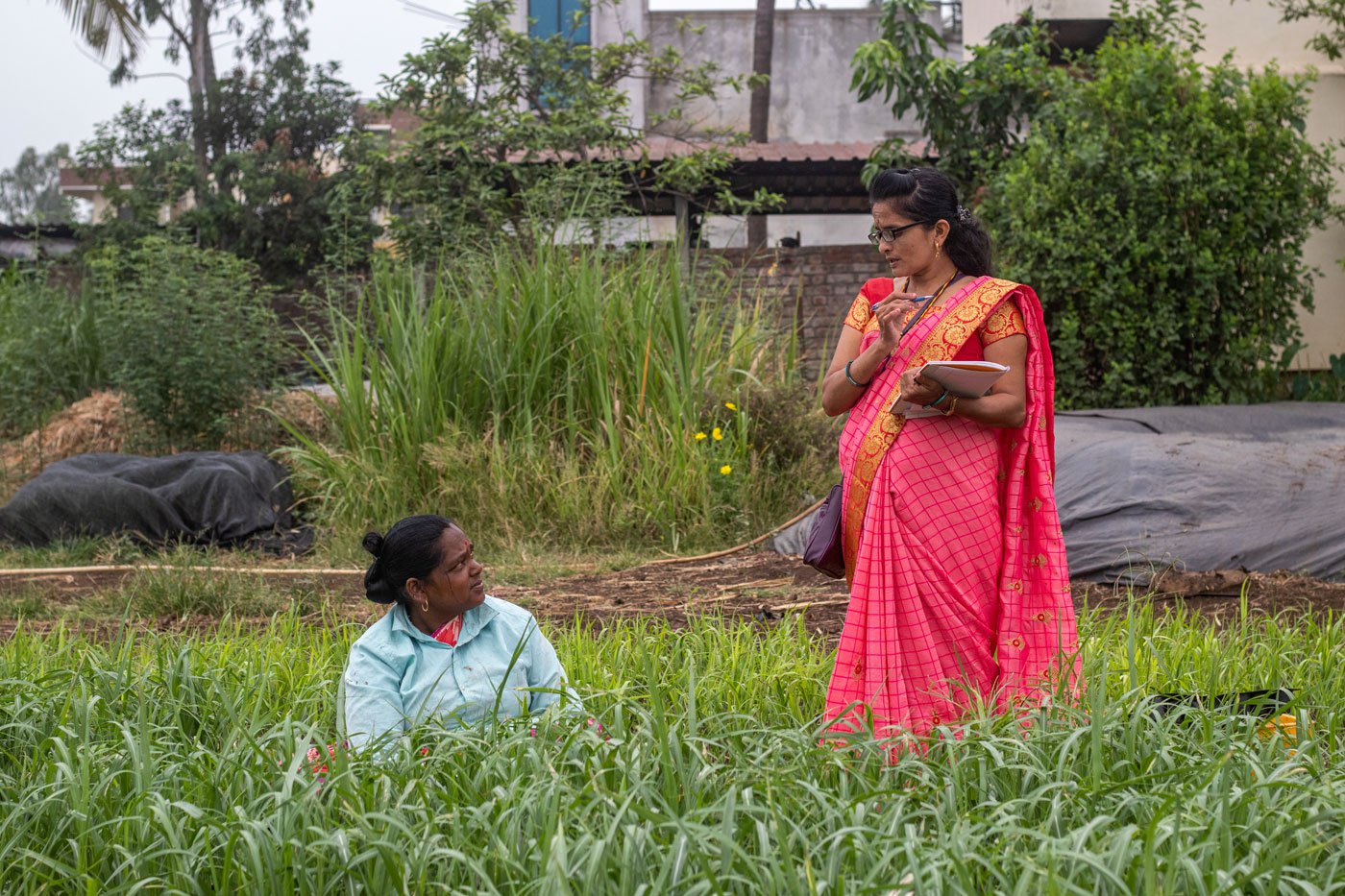
ASHA worker Maya Patil spends much of her time talking to women in the community about their health
Arjunwad’s community health officer (CHO), Dr. Angelina Baker, says there is a spike in the number of people suffering from non-communicable diseases (NCDs), such as hypertension and diabetes, over the last three years. In 2022 alone, she says, over 225 diabetes and hypertension cases have been reported among Arjunwad’s population of 5,641 (Census 2011).
“The actual numbers will be much more, but many people don’t come forward to get tested,” she says. She blames the rise in NCDs on the stress caused by frequent floods, falling incomes and lack of nutrition. [Also read:
In Kolhapur, ASHAs tell a SAD story
]
“Many flood-affected elderly villagers are feeling suicidal; such cases are increasing rapidly,” says Doctor Baker, adding, there is also a rise in insomnia cases.
Chaitanya Kamble, a journalist and a PhD scholar from Arjunwad, whose parents work as tenant farmers and agricultural labourers, says, “Because of ill-framed policies, agricultural labourers and tenant farmers bear the heaviest burden of the floods. A tenant farmer pays 75-80 per cent of the produce to the landowner, and when floods take away everything, it is the owner who gets compensation.”
Almost all the farmers in Arjunwad lose their crops to floods. “The sadness of losing the crop [to floods] doesn’t go away until there is another good produce. But the floods keep taking our crops away,” says Chaitanya. “This stress is further compounded by the worry of defaulting on loans.”
According to Maharashtra government’s Department of Agriculture, natural disasters affected 24.68 lakh hectares of land in the state between July and October 2022; just for the month of October, those figures were at 7.5 lakh hectares of land affected in 22 districts. The state received 1,288 mm of rain until October 28, 2022 – 120.5 per cent of the average rainfall. And 1,068 mm of it was received between June and October. [Also read: When it rains, it pours misery ]
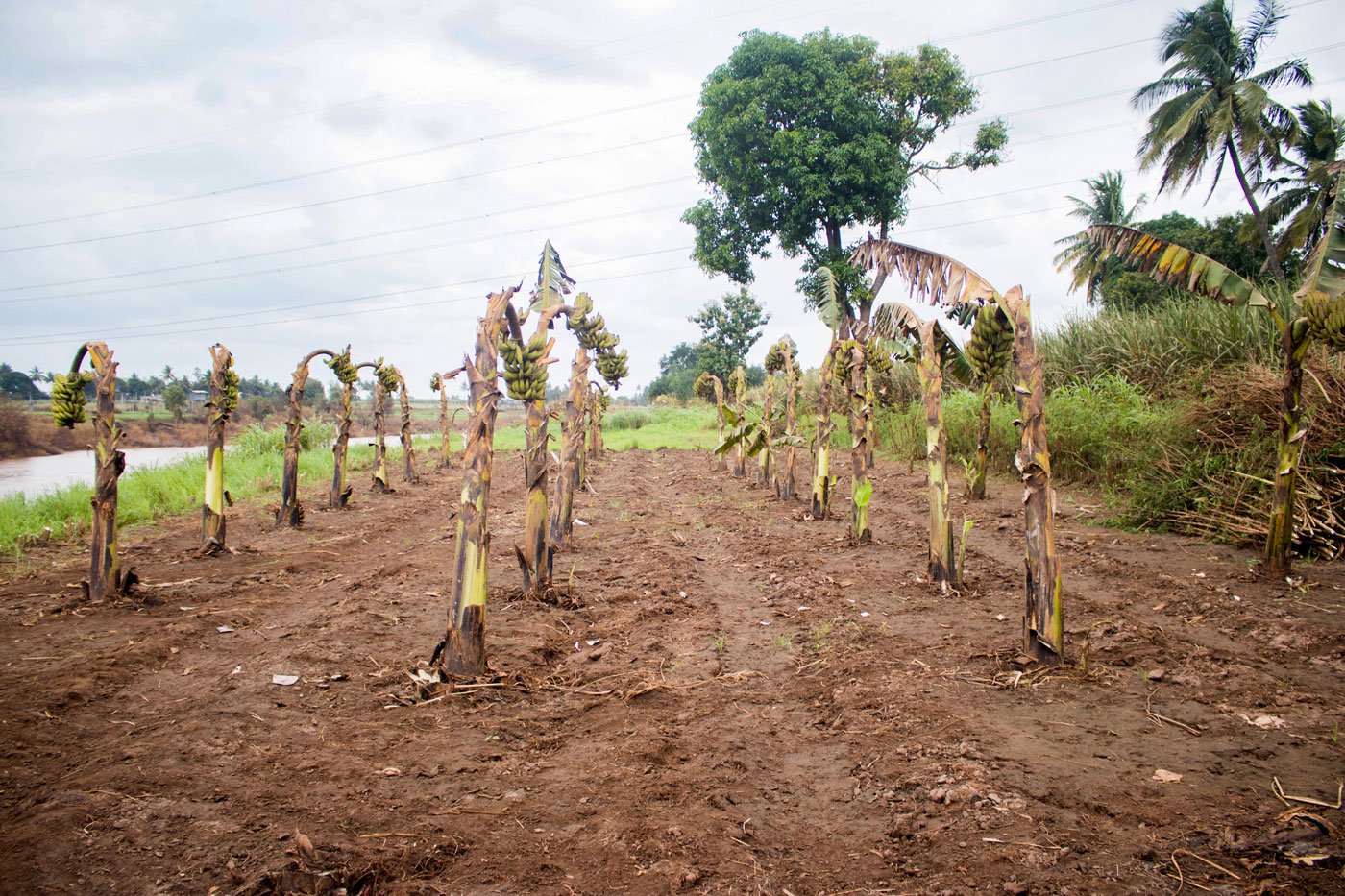
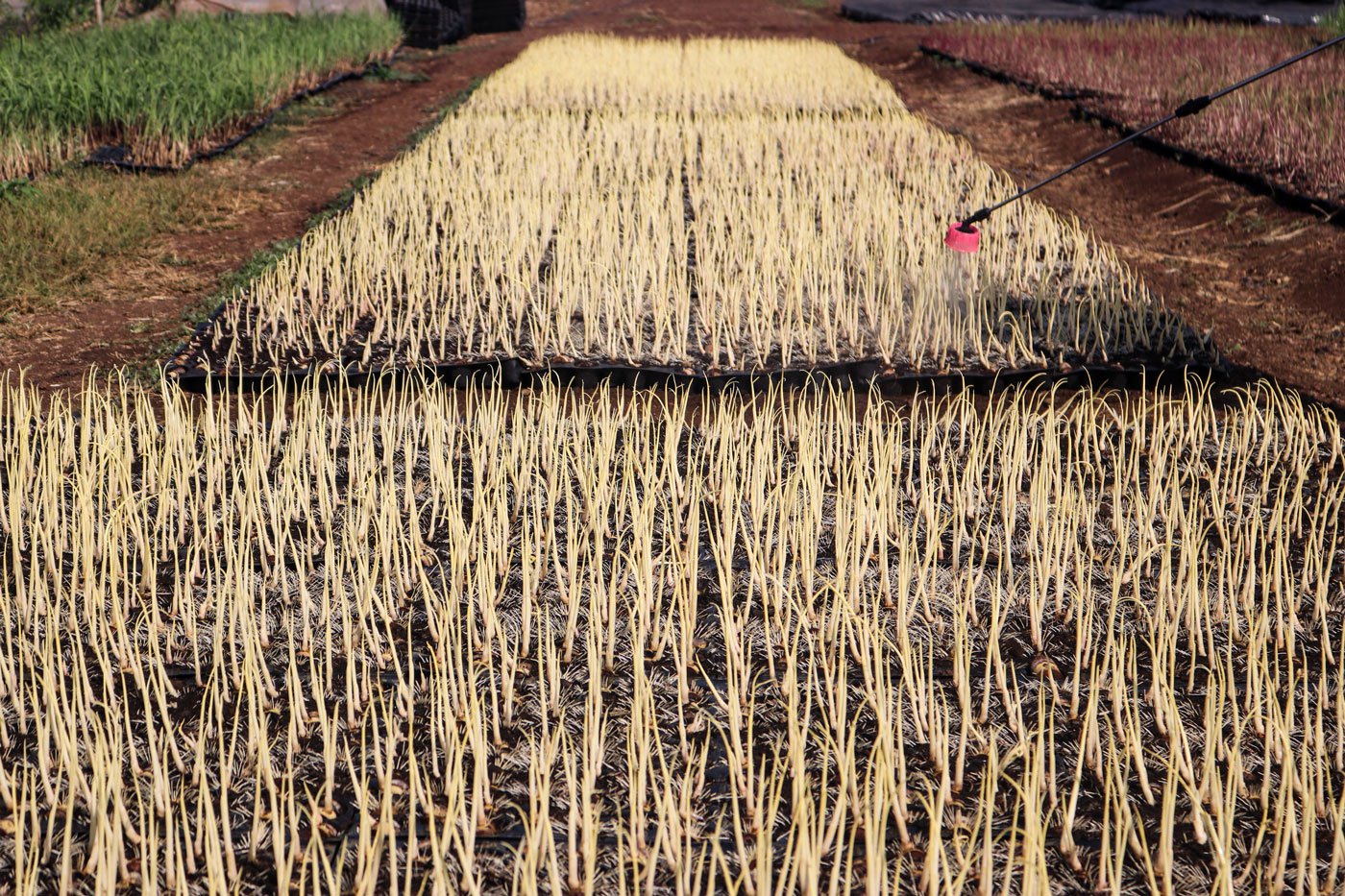
Left: The July 2021 floods caused massive destruction to crops in Arjunwad, including these banana trees whose fruits were on the verge on being harvested . Right: To ensure that sugarcane reaches a height of at least seven feet before another flood, farmers are increasing the use of chemical fertilisers and pesticides
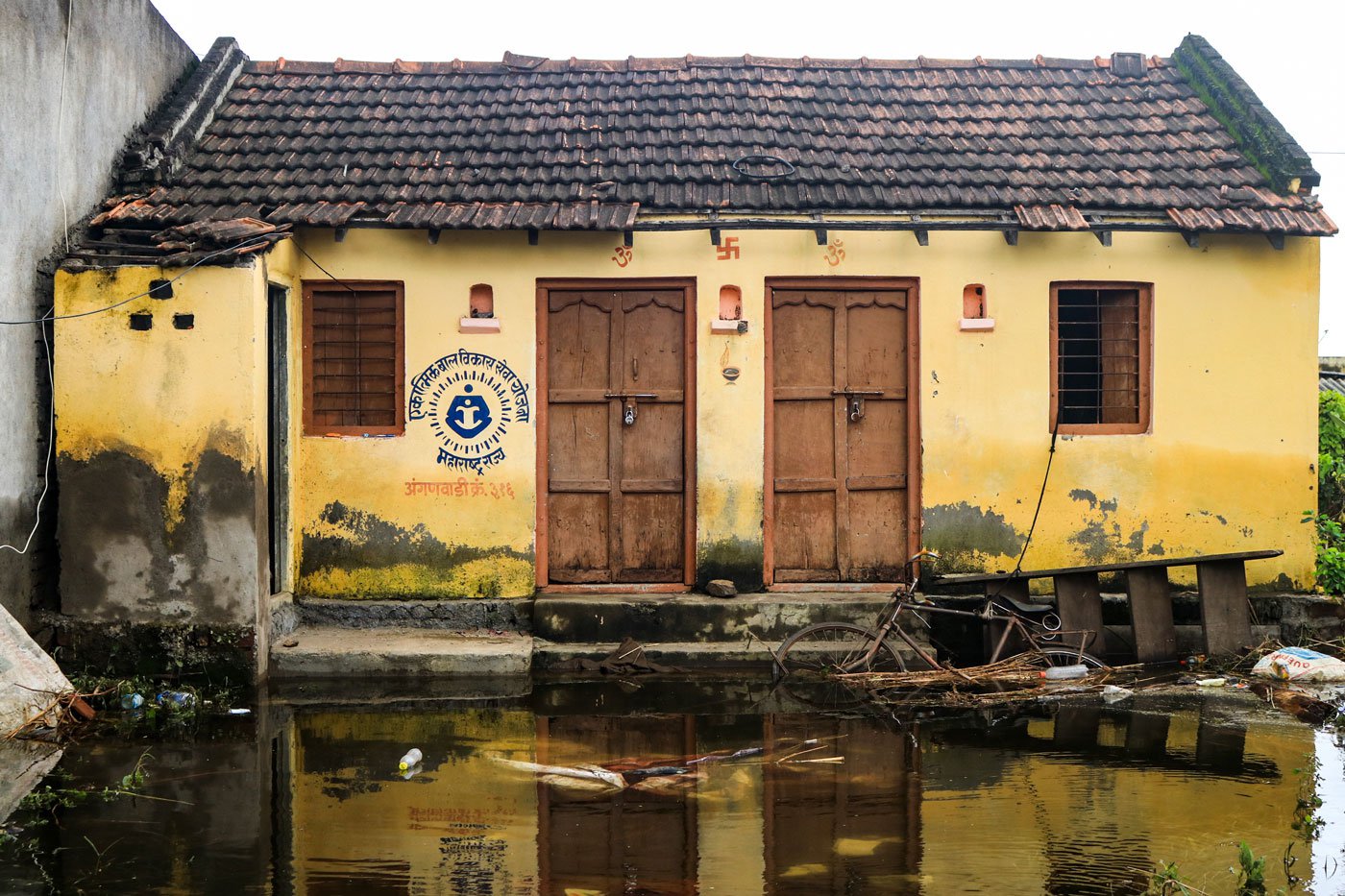
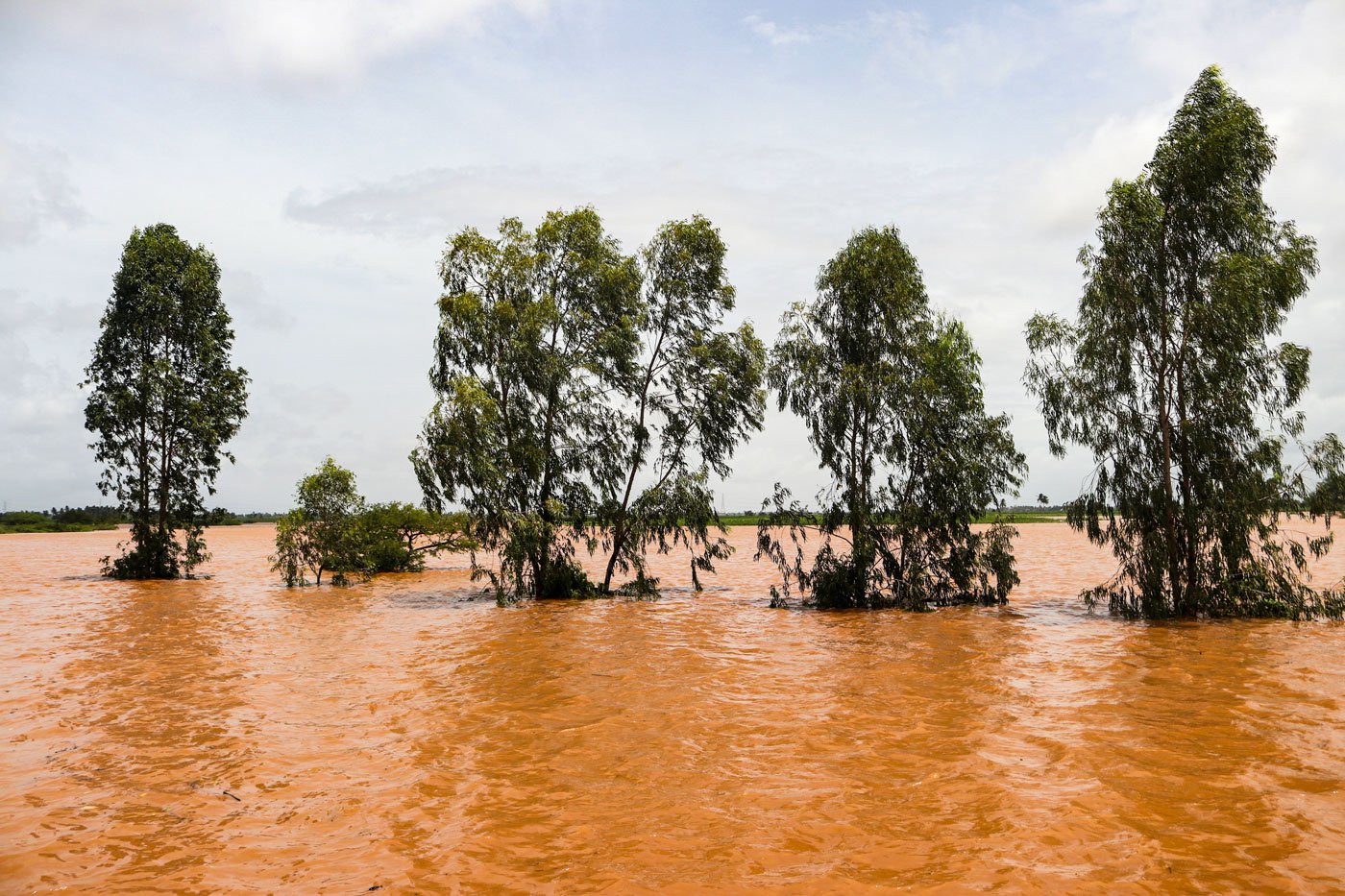
Left: An anganwadi in Kolhapur’s Shirati village surrounded by water from the August 2019 floods; Shirati faced another flood in 2021. Right: Recurrent flooding rapidly destroys farms and fields in several villages in Shirol taluka
Subimal Ghosh, professor of Civil Engineering at Indian Institute of Technology Bombay, who contributed to the UN’s Intergovernmental Panel on Climate Change report, says, “We climate scientists keep on talking about improving the forecasts, but what we are actually missing is translating these climate forecasts into proper decision-making.
The Indian Meteorological Department has made tremendous improvements in the ability to forecast accurately, he adds, "but the farmers do not use it because they are unable to convert it into decision-making [that can save the crops].”
Prof. Ghosh advocates a participatory model to best understand farmers’ problems and design the best response to climate uncertainty. “Just generating a [flood] map will not solve the problem,” he says.
“For our country, adaptation is much more important because we are seeing the effects of climate and the majority of our population does not have the adaptive capacity,” he says. “We have to strengthen our adaptation.”
*****
When 45-year-old Bharti Kamble’s weight dropped by almost half, she realised it was a sign of trouble. ASHA worker Shubhangi advised the agricultural labourer, a resident of Arjunwad, to consult a doctor; she was diagnosed with hyperthyroidism in March 2020.
Bharti, like Geeta and Shivbai, admits ignoring initial symptoms of stress triggered by the floods.
“
We lost everything to the floods of 2019 and 2021.When I returned [from a flood relief camp in a village nearby], I couldn’t find even a single grain. The
floods washed everything away,” she says.
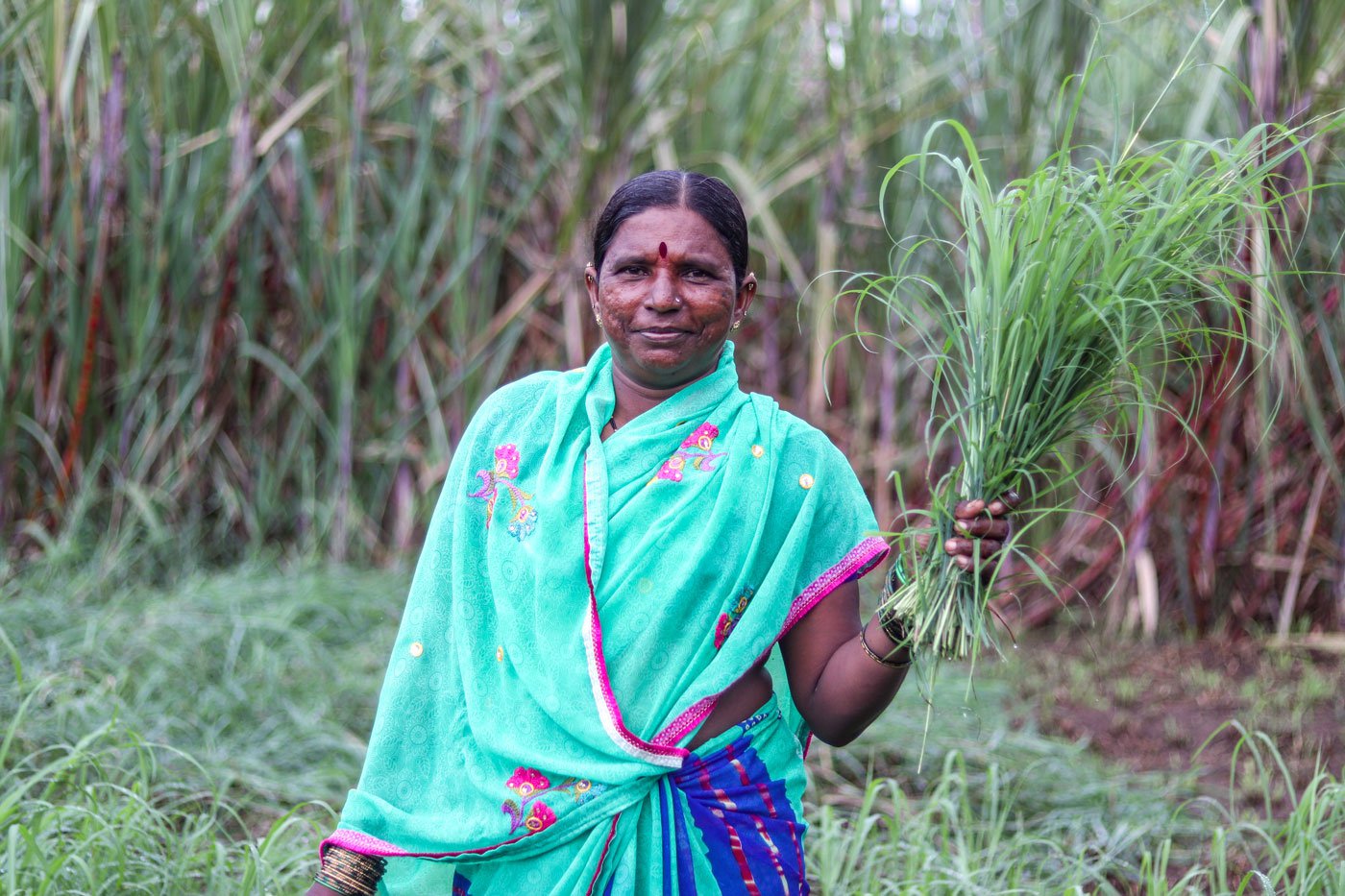
Bharti Kamble says there is less work coming her way as heavy rains and floods destroy crops , making it financially unviable for farmers to hire labour
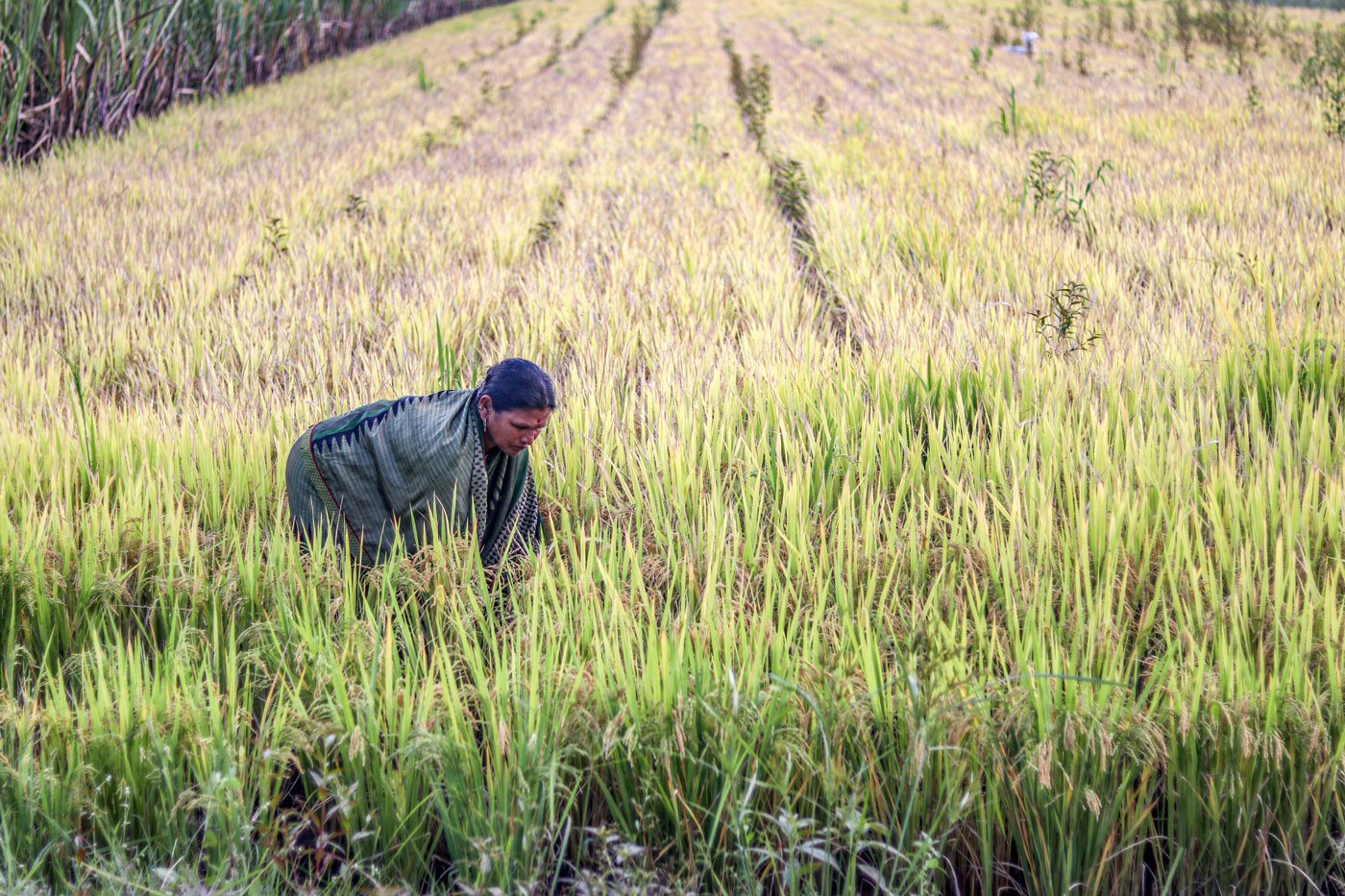
Agricultural labourer Sunita Patil remembers that the flood waters rose to a height o 14 feet in the 2019 floods, and 2021 was no better
After the floods of 2019, she took a loan of Rs. 3 lakhs from self-help groups and private moneylenders to rebuild her house. The plan was to work double shifts to repay the loan on time and avoid the compounding interest rates. However, the heatwaves of March-April 2022 in the villages of Shirol taluka proved to be major setback for her.
“I only had a cotton towel to protect myself from the harsh sun,” she says. That was hardly any protection and she soon started experiencing dizziness. Since she could not afford to take time off, she relied on painkillers for temporary relief so she could continue working in the field.
She was hopeful that, come monsoon, she would find plenty of work due to abundant crops. “However, I couldn’t get work even for 30 days in the three months (starting July 2022),” she says.
With unpredictable rainfall destroying their crops, many farmers in Kolhapur’s flood-affected villages have come up with a cost-cutting measure. “People have started using weedicides instead of hiring agricultural labourers,” says Chaitanya. “Whereas hired labour would have cost around Rs. 1,500, weedicides cost less than Rs. 500.”
This has had several devastating consequences. At the individual level, it means loss of work for people like Bharti who are already suffering severe financial stress. The additional mental strain caused by her precarity worsens her hyperthyroidism.
The land suffers, too. Shirol’s agriculture officer, Swapnita Padalkar, says that 9,402 hectares (23,232 acres) of land in the
taluka
were found to be saline in 2021. Uncontrolled use of chemical fertilisers and pesticides, improper irrigation practices, and monocropping are some of the reasons for this, she explains.
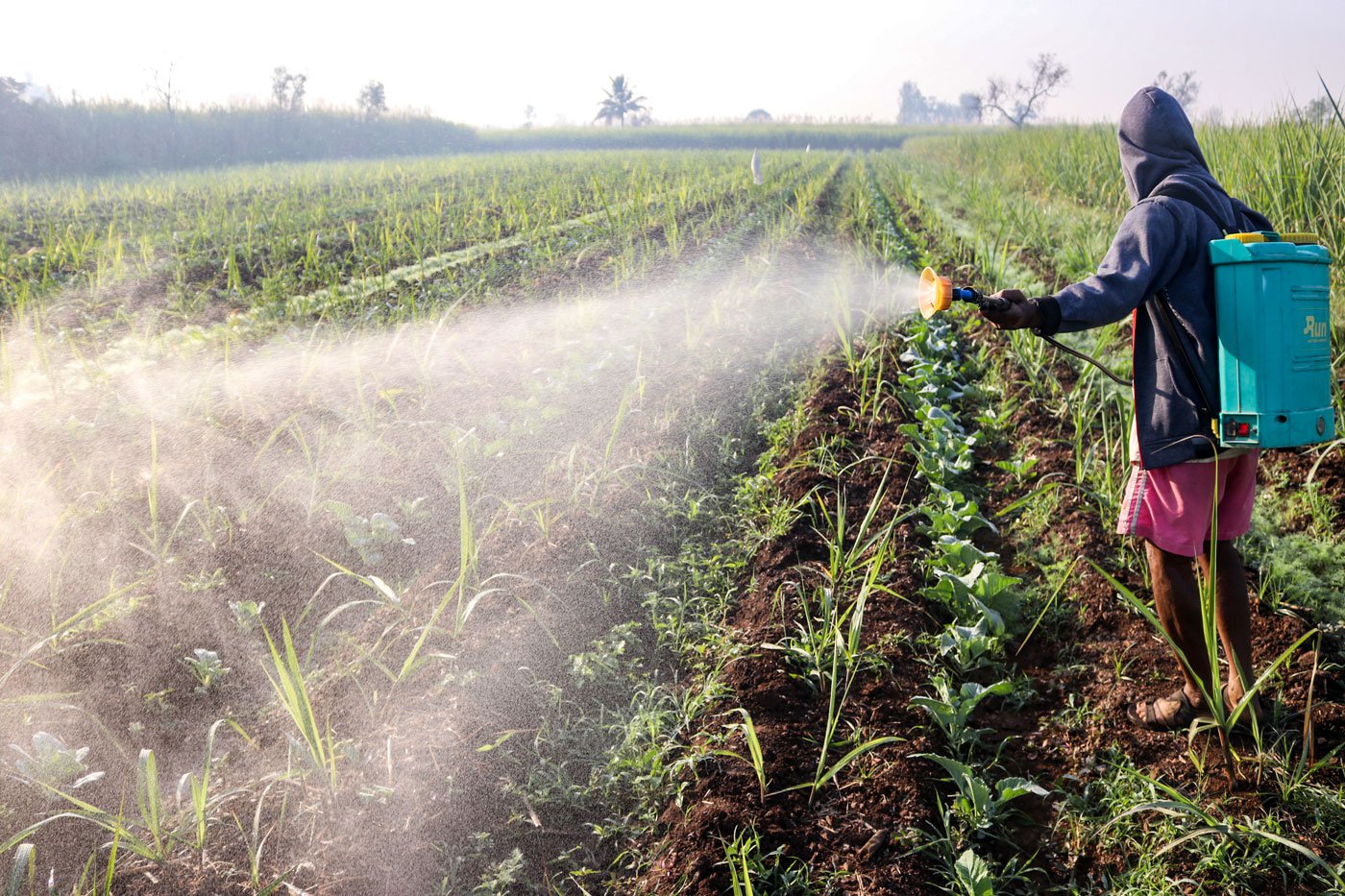
Farmers in the area are increasing their use of pesticides to hurry crop growth before excessive rain descends on their fields
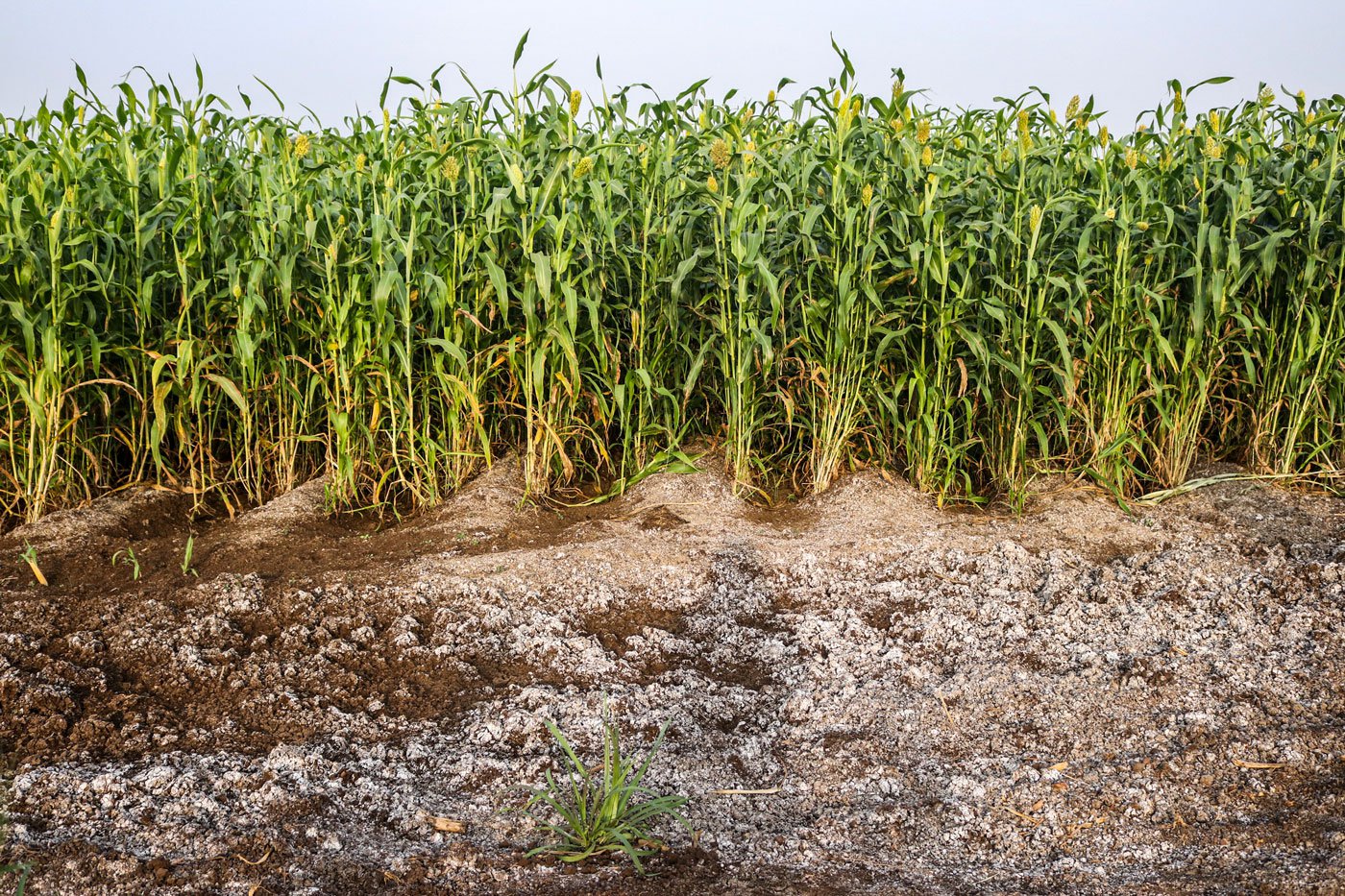
Saline fields in Shirol; an estimated 9,402 hectares of farming land were reported to be saline in 2021 owing to excessive use of chemical fertilisers and pesticides
Since the 2019 floods, many farmers in Kolhapur’s Shirol and Hatkanangle taluka have drastically increased the use of chemical fertilisers to “ensure they can harvest the produce before the floods,” says Chaitanya.
According to Dr. Baker, the Arsenic content in Arjunwad’s soil has increased significantly in recent years. “The primary reason for this is the increasing use of chemical fertilisers and toxic pesticides,” she says.
When the soil gets poisoned, can people be far behind? “As a result [of soil toxicity], there are 17 cancer patients in Arjunwad alone, excluding those in terminal stage,” she says. These include breast cancer, leukemia, cervical cancer, and stomach cancer. “While chronic illnesses are on the rise, many people don’t even consult a doctor despite the symptoms,” she adds.
Khochi-based agricultural labourer Sunita Patil, in her late 40s, has been experiencing muscle and knee pain, fatigue and dizziness since 2019. “I don’t understand what is causing it,” she says. But she is certain that her stress levels are linked to the rain. “After it rains heavily, I find it difficult to sleep,” she says. The fear of another flood keeps her afraid and awake.
Fearing high medical costs, Sunita and several other flood-affected women agricultural labourers rely on anti-inflammatory pain-relieving medicines. “What can we do? Going to the doctor is unaffordable, so we rely on painkillers that cost much less, around 10 rupees,” she says.
While the painkillers temporarily ease their pain, Geeta, Shivbai, Bharti, Sunita, and thousands of others live in perennial state of uncertainty and fear.
“We haven’t drowned yet, but we are drowning in the fear of floods every day,” says Geeta.
This story is part of a series supported by Internews’ Earth Journalism Network through an independent journalism grant to the reporter.
